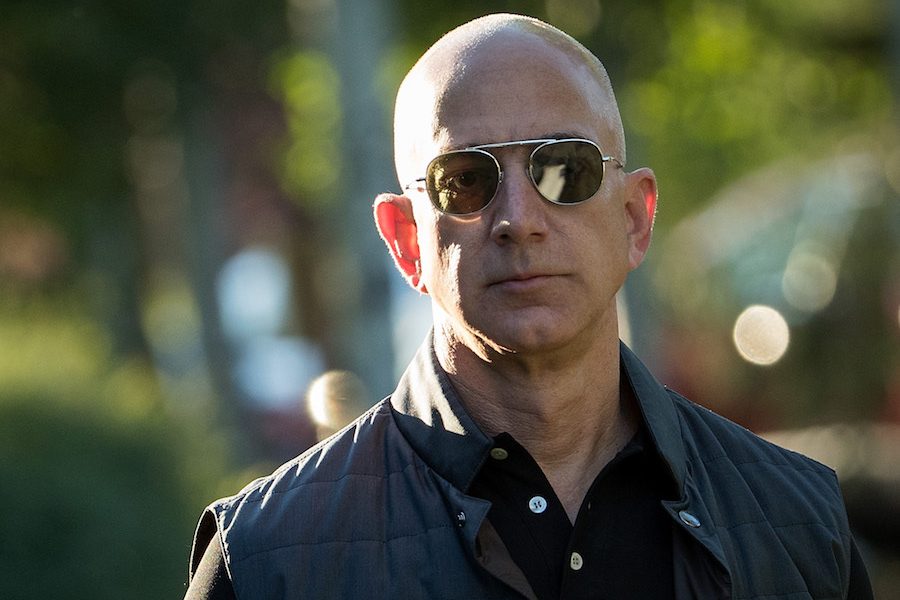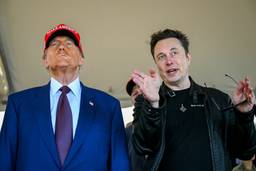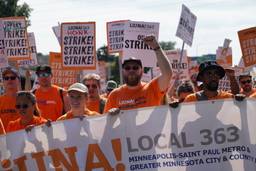
Earlier this week Amazon announced a $15 an hour minimum wage for its employees in the United States. As Amazon’s founder and CEO Jeff Bezos acknowledged in a statement, the decision was at least in part an address to “critics”: The company “thought hard about what we wanted to do, and decided we want to lead.”
But “leadership” on worker issues has a distinct meaning in a tech world that tends to see itself as exceptional, largely free of the labor dynamics that characterize more traditional American business. The wage hike can be understood as a way to head off union organizing — a small concession to put workers at ease and craft Amazon’s public image on its own terms.
The industry has a “history of swatting away worker unionization,” says Margaret O’Mara, a history professor at the University of Washington who studies the tech economy.
In part, she says, this belief is rooted in the idea that a union is “a sign that something is wrong with your company.”
According to O’Mara, early tech pioneers like Bill Hewlett and Dave Packard set the tone. Free market ideologues, they wanted to build a new kind of company, with a new kind of employee-manager relationship, a less hierarchical organizational structure. They believed “it’s too adversarial when you have a union,” says O’Mara.
Though as much logistics company as tech giant, Amazon, at least at the executive level, has largely demonstrated this outlook.
This is one reason Whole Foods, one of the few large U.S. grocery chains without a union, was a good fit for Amazon, which purchased the company in 2017. Whole Foods CEO John Mackey, touting the company’s high marks in rankings of desirable workplaces, once told Yahoo, “We’re not so much anti-union as beyond unions.”
Last week, Gizmodo reported on one manifestation of that attitude: a training video that was shown to Whole Foods team leaders following reports that some workers were attempting to organize. Yahoo news made some of the video public. It advises managers to watch out for warning signs of organizing, such as “use of words associated with unions or union-led movements, like ‘living wage,’ or ‘steward,’” and to keep an eye out for changes in behavior, such as when “associates who normally aren’t connected to each other suddenly start hanging out together.’”
Anti-union videos are not out of the ordinary in industries like grocery where union organizing is common, says Sage Wilson, communications director at Working Washington, which advocates for labor standards and wages in Washington state — though Amazon’s, he says, may be more “efficient” than most.
Amazon said in a statement to Gizmodo that the goal of the video was to foster direct and proactive dialogue with employees.
Who needs a union when you have dialogue?
The Retail Wholesale and Department Store Union, which is assisting the Whole Foods worker organization effort, has applauded the wage hike, but remains unsatisfied with Amazon’s approach to discouraging unionization.
“This is a positive step, but there is still so very much more that Amazon needs to do to be considered a decent employer, says RWDSU president Stuart Appelbaum in a statement emailed to In These Times. “Amazon must allow workers to freely choose if they want a union without intimidation. Workers should not be subject to anti-union propaganda and intense pressure when they are trying to organize for better working conditions.”
O’Mara believes there are people within Amazon’s leadership who genuinely wish to improve the well-being of the company’s lowest-paid workers. It is also lost on no one that the move has its benefits for Amazon as a business.
“Amazon does not do anything that is not strategic and not-well thought-out,” says O’Mara.
Bezos’s shoutout to “critics,” and the significant organizing movement that precipitated the wage decision notwithstanding, media coverage of the hike has characterized Amazon as proactive, firmly in control of its own narrative.
“Amazon switches from defense to offense,” read one Seattle Times headline. Bernie Sanders, among the most high-profile and vocal critics of Amazon’s warehouse working conditions, said, “I want to give credit where credit is due. And I want to congratulate Mr. Bezos for doing exactly the right thing.”
Excitement among labor activists at the wage hike has been tempered by reports that it comes at a cost: the elimination of bonuses and stock awards, which for some employees reportedly constituted an overall reduction in income despite the new $15 floor.
But O’Mara and Wilson both say that, regardless of this downside for some individual workers, Amazon’s move will have a significant ripple effect in the corporate world.
“In the absence of any political leadership from Washington, we are in the sad position of having to have these mega-employers lead the way,” O’Mara says.
The company’s move, which applies to its subsidiaries like Whole Foods, raises anew the question of the role of unions in a tech industry that, in part thanks to its own perceived sense of beneficence, regards them as essentially superfluous.
The underlying message Amazon is trying to send through the wage hike, says O’Mara, is not “union busting,” exactly, but something more sophisticated: “You only need a union if your employer is taking advantage of you” — and Amazon doesn’t take advantage.
“This is a, ‘Hey you don’t need a union. Speak up. We’re going to take care of you. We’re different.’”







